When High Mileage Pays Off
A few years ago, I was at a cars and coffee, walking down a row claimed by a British Car Club. An owner of a super-clean Lotus Evora caught me checking out their car and came over to tell me about it. “Less than 2000 miles,” was the first thing he said. “Nice,” I responded, but the conversation didn’t go much further—I didn’t know what else to say. I appreciate that others enjoy keeping a car factory-fresh, but the allure of keeping miles off a car has always escaped me—instead, it’s always seemed natural that distance covered equates to adventures and memories.
I can’t be the only enthusiast of high-mileage vehicles. After all, Matt Farah’s million-mile Lexus LS400 earned tons of well-deserved media attention. Bill MacEachern’s 800k-mile 1976 Porsche 930 Turbo is a revered feat of automotive endurance. These high-mileage stories, along with a few recent sales, got me thinking: Surely we have data at Hagerty that show which cars are appreciated specifically for their ability to rack up miles. Among those figures, I had a theory that I’d find that some people are willing to pay more for vehicles with extensive history or extremely high mileage. It was time to dig into the numbers and find out.
Rolling through the Numbers

I assembled the hundreds of thousands of auction transactions in our database that have odometer data and set about determining the parameters of my search. 300,000 miles was the benchmark—you’d be surprised how regular 200,000 miles is these days (even my daily driver Toyota is about to roll over 250,000). I also tightened the net to exclude vehicles that no longer had their original engine. High-mileage enthusiasts would care about originality—the pride is in the maintenance and the longevity, after all. That disqualified some impressive survivors, like this 603k-mile 1990 Toyota Pickup, but it did help hone the data set to the cream of the high-mileage crop.
This left just under 150 vehicles sold on online auctions dating back to 2015. A quick caveat: Auction sales are admittedly not a complete view of the market, but they provide data we can see. There’s no question other models, like Cummins-powered Dodge Rams and Power Stroke–equipped Fords are racking up the miles and commanding good money, too—they just tend to transact privately, where mileage and other details are often unavailable.
The 300K+ Club
That filtered the data to our finalists. For anyone who appreciates a long-lived ride, this list is probably not very surprising.
All of the top high-mileage cars come from Japan or Germany—countries with a reputation for overbuilding their vehicles, at least when these particular models were constructed. Mercedes-Benz still offers high-mileage awards, with the million mark as its highest threshold. In fact, Mercedes was so confident in the reliability of its cars that it installed the industry’s first six-digit odometer on the 1971 350SL. It would take nearly 30 years for the rest of the industry to completely forgo the old five-digit odometer.
The only car from a non-German or Japanese manufacturer with three or more sales above 300K miles is the Volvo 1800—not surprising considering one was driven over 3.2 million miles. The model tied two other German cars (the BMW E28 5 Series and Mercedes-Benz W124) and two other Japanese cars (Honda CRX and the third-gen Toyota 4Runner) with three each. The Volvo 240, a favorite of our media team, would have made the list if it weren’t for a few engine replacements.

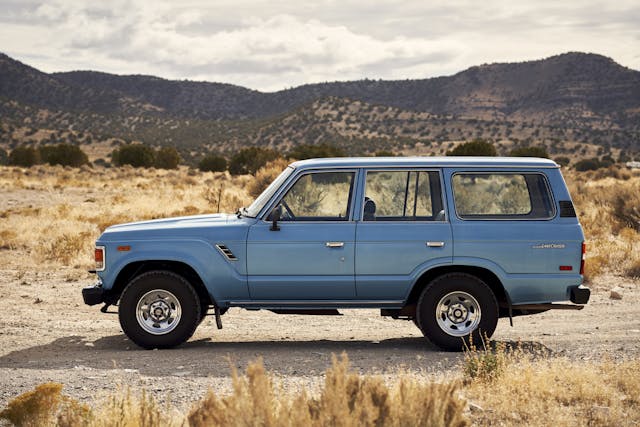
Tied for first are the FJ60 and FJ80 Toyota Land Cruisers, which, if you’re at all familiar with these trucks, is not shocking. These vehicles were designed with one purpose—to last forever in the harshest environments on earth. This is from a company who overbuilds everything to begin with: Over 42 percent of the vehicles in this data set are Toyotas. This isn’t limited to their trucks, either—some of their sports cars have racked up some serious mileage. Recently, this 388K-mile 1993 Toyota Supra Turbo sold for $52K after fees, and this 421K-mile 1991 Toyota MR2 sold above our #4 value at the time. Clearly, bidders weren’t turned off by the astronomical mileage, and maybe they were even bidding because of it. More on that in a moment.
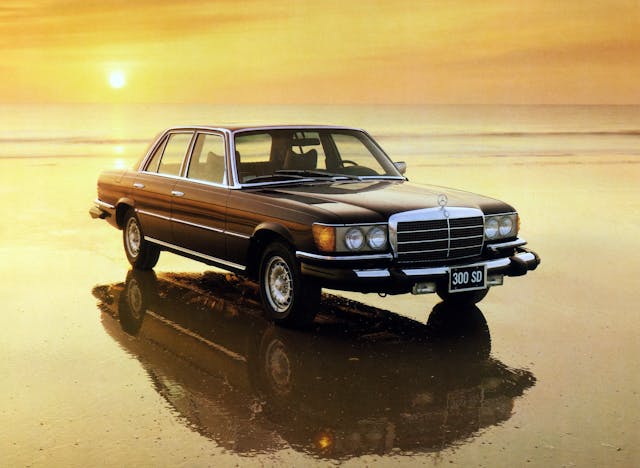
In third place is the Mercedes W123. While offered in a variety of body styles and engines, the only ones we saw make it past our mileage threshold were diesels, mostly 300s and a couple 240s, with eight of the 11 wearing a wagon body. The Mercedes 300TD wagon has a reputation (rightfully so) as one of the longest-lasting cars ever built. In fact, the car with the highest mileage on our list is a 1979 Mercedes 300TD, which was driven 782K miles by the time it sold in 2021. The only issues reported at the time of sale were that the A/C didn’t work and the cruise control would sometimes kick off. That’s it.


Fourth place finds a tie between the 100-series Toyota Land Cruiser and the first-generation Toyota 4Runner (combined with the pickup it was based on). In a few years, it’s likely that the 100-series Land Cruiser will sit at the top of this list—we have seen 51 transactions of vehicles with between 200,000 and 300,000 miles.
High Mileage Means…A Higher Price?
Having identified which cars occupy this rare air, I set out to determine whether there’s a market premium for extreme high mileage. Since mileage usually correlates to the sale price of a vehicle, I plotted price vs. mileage and added a linear line of best fit between the two. If we see “extreme-mileage” vehicles more often sell above this line, then there is likely a premium. For this, we only included sales since 2023 so we won’t have to adjust for a fluctuating market.
Looking at sales of our top three vehicles—the Toyota Land Cruiser FJ60 and FJ80, and the Mercedes W123—the one with the least convincing data is the FJ60. Let’s start there.
There is a clear trend line where price decreases as mileage increases—as expected. Plenty of examples with a lot of miles sold above this trend line, but this 1988 Toyota Land Cruiser FJ62 with 373,358 well-documented miles sold for $26,250—an outlier sale. That was a higher sale price than 43 percent of the FJ60s in the chart with fewer miles. One thing that made this Land Cruiser so desirable was that it had been owned for 35 years by a single family, who took exceptionally good care of it.
This trend becomes much more clear when looking at the next generation of Land Cruiser, the FJ80.
Here, we see two high-mileage outliers above the price vs. mileage line. The first one, a 467K-mile 1997 Land Cruiser sold for $17,295—higher than 40 percent of the FJ80s with lower mileage on this chart. What’s even more surprising is this truck was involved in a collision with another vehicle in 2014, and it doesn’t have the desirable triple-locking differentials. A 519K-mile 1995 Land Cruiser pulled in an even higher price at $18K—just under our #3 condition value.
The smaller data sets in the scatter plots illustrate specific examples, but if we expand the view to look at all FJ80 transactions regardless of time or mileage, and group them into mileage brackets, an interesting trend emerges:
As expected, median sales price falls as the mileage bracket gets higher. But, when mileage surpasses 400K, there is a significant bump in median sales price (+39 percent). You could argue that these auctions sites will be more strict with the overall quality of the vehicle as the mileage moves into this range, which could be contributing to the higher sales prices. But, going back to the scatter plot and comparing vehicle to vehicle, extreme high mileage looks more like a selling point and less like a liability.
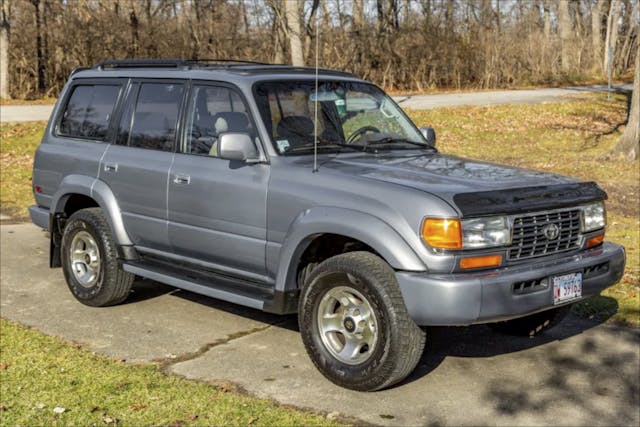
Compare this 519k-mile 1995 Land Cruiser to another 1995 Land Cruiser with “only” 256k miles. Both are the same model year, both have three locking differentials, and both were sold on the same auction site within the same year. While the 256K-mile one has half the mileage of our outlier, it sold for 42 percent less ($10.5K vs. $18K). You could argue the condition is slightly better on the high-mileage example, but not enough to account for such a high premium. Besides, if a collector is concerned with mileage, they would likely have been scared off by 256,000 miles, much less 519,000. The bidders left in auctions like these are not only unafraid of high mileage; they appear to see it as a bragging right. When rarity corresponds to collectibility, there are much fewer 500K-mile Land Cruisers than 200K-mile ones, and bidders seem to be responding.

We saw this same phenomenon in the FJ60. Examples with over 400K miles had a median sale price above ones with between 300K and 400K, but at only a 2 percent premium. However, there was only one sale with mileage above 400K, so I decided to exclude the chart from the story.
The same phenomenon presents itself in our final vehicle—the Mercedes W123. For simplicity, we’ll stick to just the 300TD wagon—the most common W123 in our high-mileage list.
This time, it is actually two sales of the same car only a couple months apart. This 422K-mile 1982 Mercedes 300TD was bid to $12K after fees, but the winning bidder failed to pick up the car. It was then relisted two months later, where it was bid up another $1300 to finally sell for $13,387—higher than half the cars with lower mileage in our data set. This proves that the first sale wasn’t a fluke, and instead may have drawn more attention to this 300TD with such extensive history.
Again, this trend wasn’t just seen in our reduced dataset. When expanding to include all 300TD wagon sales, the median sales price for cars with 400K–500K miles is 16 percent higher than ones with 300K-400K miles and six percent higher than 300TDs with half the mileage at 200K–300K miles.
There is, however, a limit to this madness. While 300TDs with 400K–500K miles sell for a premium, this is not true for vehicles with more than half-a-million miles. To be fair, the two cars with over 500K miles are well over that bar. This 632K-mile 1984 Mercedes 300TD was in pretty rough shape when it sold in 2022. Even so, its $8558 final price was 10 percent over #4 condition value at the time, proving it still sold better than other cars in similar shape. Same story with the 782K-mile 1972 300TD mentioned earlier. While it was in better shape overall, you can’t argue that three-quarters-of-a-million miles might place it as a #4 condition car. However, its $9579 final price was 50 percent over the our #4 condition value at the time.
Long May That Odometer Turn
I might not have found a fellow traveler in the owner of that low-miles Lotus, but when I reached out to Jessica Dickinson, the woman who bought that 782K-mile 1972 Mercedes 300TD Wagon (which she has affectionately named Bella), I discovered someone who shares the idea that the right car can be a long haul companion.
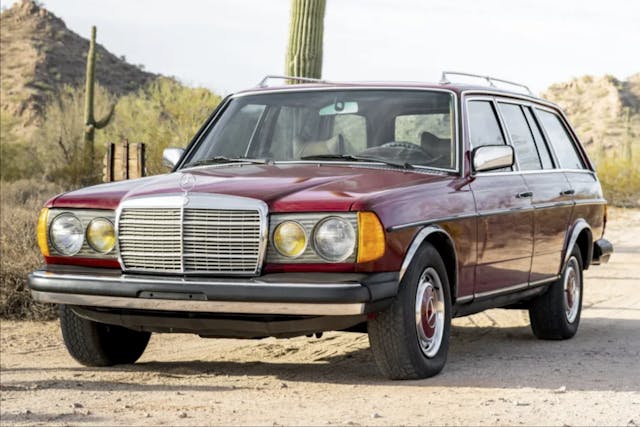
“You see, my family has a bit of a history with rock-solid Mercedes with more miles on them than you can shake a stick at,” she shares in an email. “So when I stumbled upon this absolute treasure of a 300TD on Bringatrailer.com, boasting mileage that would make your head spin, well, I just couldn’t resist.” When she won the auction, she got a one-way ticket from her home in Asheville, North Carolina, to Phoenix to pick up the 300TD.
“Armed with nothing but a cigarette lighter fan and a cooler packed to the brim with ice and beverages, and a tank full of fuel, Bella and I set out on the journey of a lifetime,” says Dickinson. “We cruised down Route 66, cutting through the desert heat like a pair of outlaws on the run, well more of a jog, she is a non-turbo diesel after all. Up I-70 we climbed, into the majestic Rockies, with Bella purring along like a champ. And let’s not forget the endless stretches of corn country, where the only thing sweeter than the scenery was the sound of Bella’s engine humming beneath us.”
The two made it home, and Dickinson shares Bella with friends, encouraging them to make their own memories. The numbers bore out my idea about a niche affinity for high-mileage cars, but at the end of this journey, it was the people who proved the passion.
***
Check out the Hagerty Media homepage so you don’t miss a single story, or better yet, bookmark it. To get our best stories delivered right to your inbox, subscribe to our newsletters.
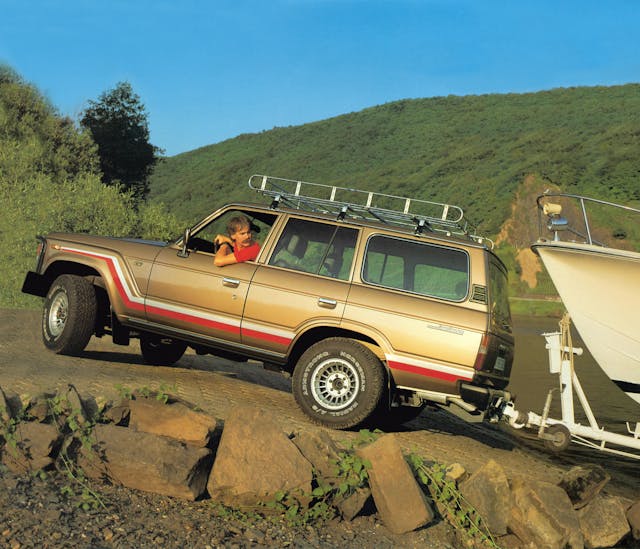


All interesting info. I’ve got a couple of rigs that are approaching the extreme mileage threshold. I can hardly wait until I can cash in on that odometer premium! 😁
Most American models will also go a long way. I have seen it first hand a number of times. My uncle just unloaded a 02 S10 that went 320K miles on the 4 cylinder before a rod left it. We had a couple sales men in the early 80’s running a Chevy and Ford wagon. Both cleared 500K miles.
Trucks the number of trucks with 500K not hard to find.
Folks in WV can also attest to high miles. Many may live an hour from Walmart and Mc Donalds. They may drive an hour and a half to work. 200K to 500K in a couple years is not hard to do. Why wife aunt has a 17 Impala With nearly 300K already.
On the other hand I see Benz from the early 2000’s where they are dead early due to the biodegradable wire harness falling apart. I have BMW’s with less than 100K with struts rusted through the towers.
I just find most euro buyers willing to drive longer because they expect to since they paid more for the car. Americans just dump the car before 100K as values drop due to that stigma.
Interesting piece.
Probably a few old US domestic cars out there with very high mileage but no paper trail to prove the odometer has been around 4x because it doesn’t have the hundred-thousands digit and not many keep all the receipts (and pass them on when they sell).
So few vehicles getting to auction to form the data set makes it tricky. I’m sure there is lots of clapped out diesel Jettas with the mileage for example. So there is the “premium enough to justify taking to auction” filter if you will on it all.
Livery/service vehicles can hit high mileages but need to get to that “forever owner” at the right point to not just be parted back into the fleet or scrapped. So many vehicles are scrapped in NA & Europe that other jurisdictions would have been able to keep going for decades more…
Where I live the salt kills the Toyotas. The 80s-90s ones would have high mileage on drivetrain and the bodies literally falling off them but still run just fine. This isn’t counting the “rotting frame recall” on Tacomas.
I encourage the author to keep digging into aspects of this story.
There is a surprising number of Lincoln Town Cars performing daily cab service at Metro North stations. Considering this car has been out of production for 13 years, those vehicles must have big numbers on their odometers. The third generation has a reputation for being bullet-proof. I’m sure @Sajeev could testify to their stoutness.
Indeed I could…but the better example is the sheer number of Crown Vics that are still being used in Police fleets. There are several in my city, and we certainly have the money to replace them. (But we clearly don’t want to!)
I briefly owned a 2006 Signature, bought with 640000km. I only added another 30k before selling, but it really didn’t seem to need much to keep running. Mine was almost certainly an airport limo, and since then I notice that many such airport limos here seem to have similar mileage.
I think why not many American offerings end up on that list is because when someone sells a 250000 mile Buick or truck, it’s just a vehicle. The whole thing with the FJs, Landcruisers, and by extension Rovers is something that I never really got. People will pay ridiculous money for ones in fairly poor condition – this almost seems like part of the experience.
C’mon, man – you’re bursting my bubble here! 😒
I mean, don’t get me wrong: I think you’re 100% right, but still…
It would be interesting to know what car people consider high mileage as versus the average buyer. I’ve heard a lot of people say – ‘We had to get a new car!’ – when theirs had less then 70k. Seems like when that first non maintenance item took a dive after the manufactures warranty had expired they figured they were living on borrowed time. Perhaps it’s all those extended warranty company ads. Some of which are nothing less than fear mongering. – ” And when your check engine light goes on…it’s game over ” – Right Ice. Couldn’t just be a simple oxygen sensor. Way to scare that widow on a fixed income.
I’ve been warming up to owning high mileage vehicles because in general most items can be fixed. I purchase a 250k mile Jeep Comanche a couple years ago and have been using it extensively as a truck. Sure it needed some maintenance, but the truck was clean and things can be fixed. I have a 99 BMW E36 M3 which is nearing 200k miles, my brother and I drive it hard and put it away wet, but with proper maintenance it’s doing well,we plan to drive be it for many more miles. One of the most environmentally green things people can do is keep their vehicle on the road instead of purchasing a new one, manufacturing processes are incredibly dirty.
Great comment! 👍
I have a friend who put over 600,000 on a ’77 Impala. At that point the vehicle was retired from cab duty and continued to be driven regularly for several years longer.
Fascinating, and somehow not surprising. My ’08 Civic (stick) has 159k on the clock, and the engine feels better now than when I bought the car with 35k on the clock. I’m planning to keep it for the rest of my life, but if found a car like Bella, I might be tempted.
Here is my article on the late Irv Gordon and his 3 million mile P1800, which includes observations of the mechanic who rebuilt the engine the second time, 2 million miles after its first rebuild.
http://www.thetruthaboutcars.com/2014/02/the-man-for-whom-they-made-the-three-million-mile-badge/
And my article on Tom Thalmann and his now 700k mile Porsche 911
https://www.hagerty.com/media/car-profiles/how-do-you-get-a-porsche-turbo-to-647000-miles-its-all-about-seat-time/
I am the 4th owner of Rutger (’92 BMW M5) and his current mileage is just under 400k. I drive him hard and love to run through the gears (gotta love manuals….right!) He “pulls” like when he was new. With proper maintenance, which I make sure he gets, I am certain that Rutger will be with me for many more kilometers to come. Long live the high mileage cars!
Do the high-mileage folks do ALL the maintenance suggestions in the Owner’s Manual? (Flushing all the “things”, etc.)? Or, do they repair things as they break.
My 2014 Lexus RX 350 just rolled over 100K – all I do is regular oil changes. I just decided to keep it – we bought it new, and we’re way down south.
Shoulda kept the ’86 VW Jetta with 750,000 miles? (Unfortunately, the neighbor’s ex-wife took a sledge hammer to the windows one night. But if we had replaced the windows, we would have kept the car!)
I’d like to see age factored into the graphs. Does it change the value? (Our first Fiat 128 had 300,000 miles at 3 years old.)
Wow, you must live in a rough neighborhood, Mary! 😉
Starting to read this, I wondered “Where’s mention of the P1800?” (with multiple millions of miles). I just needed to “cool my jets”. For me though, my desire was always reserved for the P1800ES.
I mentioned it, a handful of posts above yours, and I included a link to my article on it, as well as my link to my article on a high mileage (now >700,000 miles) 911 which appeared in Hagerty.
2011 F150, 270000, 1998 Bmw m3, 174000. If you take care of them they last, if you don’t, they don’t.
All you guys ever talk about is European vehicles and Japanese vehicles. I owned a Fiat 124 that was a material piece of garbage. I’ve had four Japanese cars that were great! But I also had a Gen. 4 Camaro that had 141K on the clock when I sold it and still ran excellently on it’s LS1 V8. My mechanic told me that those engines would usually go over 250K miles before needing attention. I grew up in the late ’50s and early ’60s when manufacturing techniques limited and typical engine’s life to about 100K. Apparently you guys are still stuck there. I also had a 302 powered ’83 Bronco XLT that I drove for 177K miles without a ton of problems. I presently have a ’69 Mustang with the original 302 and 155K miles, but I did rebuild that one at 100K. I also have a 351W ’95 Bronco XLT with 175K miles that runs and drives like a new truck. The higher tolerances that modern machine equipment allows has made American cars virtually as long lived as the vaunted Mercedes or Volvos.
I lost count of the number of American cars I’ve pushed deep into the 200s… and I don’t baby my cars
Our family has easily has many cars goo 150k+ and were in super condition when traded in. We probably should have kept them.